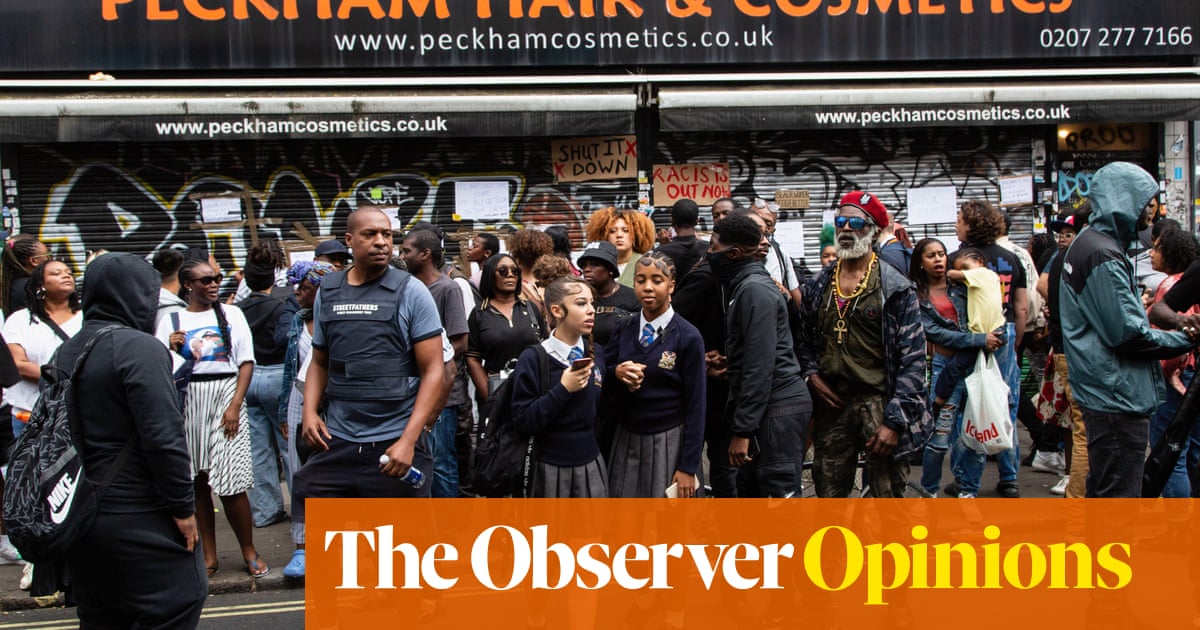
What’s in a name? A great deal it would seem, including perhaps a diminished chance of being shortlisted for a job, offered a university place, or a rental property if you have an ethnic or racial minority background. Even a nursery place can hang in the balance, as Scotland’s secretary for health and sport, Humza Yousaf, recently discovered: he suspects that an application for his two-year-old daughter was denied by a nursery in Dundee on discriminatory grounds. (The nursery in question has denied the allegation.)
To researchers and activists who continually identify the drivers of racial inequality, and who are long accustomed to the obfuscation that stymies change, this would not come as news. What’s striking is that, despite legislation designed to eliminate such inequalities, they persist. And they will continue to, until white-majority societies confront the institutional and cultural factors that make them possible.
For more than 50 years, researchers in the US and UK examining racial discrimination have had in their armoury the use of field experiments, the so-called “matched pairs” method. This allows us to see the ways in which name-based racial discrimination remains a feature of our societies today. Conventionally, the approach makes at least two applications with identical content (eg skills, qualification and training) but differs in the name of the applicant; one job application uses a conventional white-majority name, and the other signals that the applicant has an ethnic or racial minority name.
Published earlier this month, and based on 83,000 applications to real job adverts from over 100 of the largest US employers, a study by Patrick M. Kline and colleagues shows beyond doubt that “distinctively Black names reduce the probability of employer contact”. Perhaps surprisingly for otherwise reserved economists, their findings move them to call out what they term “systemic illegal discrimination”.
In the UK, meanwhile, studies that tested for racial discrimination in recruitment processes have shown that “people from ethnic minorities were less likely to be successful with their applications, even discounting differences such as age and education”. While this relates only to the early, pre-interview stage of the recruitment process, researchers had to send out 74% more applications for minority-ethnic candidates compared with white candidates.
Partly building on these insights, researchers have gone further by using odds ratios, which offer both a probability of a positive response from the employer and the probability of being employed. One clear finding is that while there are variations among them, all ethnic and racial minority groups are substantially less likely than the white British group to receive a positive callback when applying for a job.
To be clear, not all these disparities can be explained solely in terms of race and ethnicity alone. For example, we know that social class and gender also play a key role in exacerbating ethnic and racial disparities in particular sectors of employment. But it is the case that systemic inequalities based upon race and ethnicity cannot be overlooked in any plausible explanation of them. Three points, however, are essential to grapple with.
Firstly, the experiences that such racial inequalities illustrate have been around for a long time, and are another way in which we need to get beyond novelty – the issues are not new simply because they recur. Over the years such experiments have been repeated myriads of times and routinely pointed to named-based discrimination. Take a moment to view this Panorama episode from 1956 on the “colour bar” at Euston station and the negative experiences of four Jamaican men applying for a porter’s job. This was in spite of the fact that it was labour shortages that had brought people to this country – who came as British citizens, and would be later turned into migrants through successive pieces of immigration legislation.
Secondly, these outcomes continue despite the wide-ranging remit of race equality legislation that is specifically meant to promote equal opportunity in the labour market and other key spheres of British society (eg education, health and political participation). Often this legislation is only partly implemented by public and private bodies, meaning that name-based discrimination at entry level not only continues to occur, but is pulled across the experience of work: “groups that experience worse hiring discrimination also have higher ethnic penalties in employment”. What is happening therefore cannot be solved by laws as a generic requirement and instead need white majorities to take ownership for racial disparities in their everyday conduct too.
Thirdly, tackling discrimination that is not sustained by individual motives alone, nor formally supported in public policy, is among the key challenges in trying to grasp the nature of contemporary inequalities. This is what the issue of institutional racism focuses on, something that draws our focus towards conventions and away from individual motives alone. A word that captures what is being described is “unwitting”, and this is precisely how institutional racism came to be understood in an inquiry into the London Metropolitan police service.
Fast-forward more than a quarter of a century after Stephen Lawrence’s killing, and what can we say was achieved, partially and wholly, and what objectives did we fall short of and why? One answer is to rightly point to the kind of disavowal of racism found in the Commission on Race and Ethnic Disparities (Cred) report, but this is also a longer-standing issue. It can only be faced when white majorities come to terms with what Audre Lorde called “old blueprints of expectation and response, old structures of oppression”, as well as the social and moral cost of letting this racial injustice continue.
Nasar Meer is a professor of race, identity and citizenship at the University of Edinburgh











